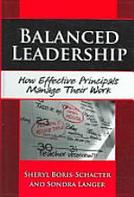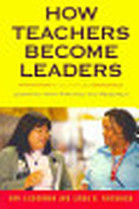Throughout my Master's Program, I was able to read an assortment of teacher leadership literature. These books have not only helped me develop into the leader I am currently today, but they will continue to guide me to become a more successful leader in the future. Below, you will find the books that have helped shape my knowledge, views and beliefs as to what a strong leader should exemplify.

By Lee Bolman
The best leaders use multiple frames to view common challenges and to solve the most difficult problems. A series of dialogues between a novice and a master teacher and between a new and a seasoned principal demonstrate how framing-and then reframing-challenges brings clarity.
The best leaders use multiple frames to view common challenges and to solve the most difficult problems. A series of dialogues between a novice and a master teacher and between a new and a seasoned principal demonstrate how framing-and then reframing-challenges brings clarity.

By Robert Evans
The keys to having an outstanding career as a school leader. The American educational system is in crisis; trends of recent years have been extraordinarily hard on educators. An entire generation of school leaders is retiring, many of them early, and the number of candidates applying to replace them is plummeting. In many districts, applications have shrunk by nearly two-thirds. Seven Secrets of The Savvy School Leader hopes to counteract these glum statistics by giving both aspiring and experienced school leaders important survival tools, and encouraging long-term leaders to renew their faith in their own abilities. Describes the innate tensions inherent in leadership Explores the difference between dilemmas and problems Encourages leaders to make change by making meaning Offers guidance for being your best and bold self Written an expert on school leadership who has worked closely with thousands of schools over the years, the book will help anyone serving as or considering becoming a school administrator.
The keys to having an outstanding career as a school leader. The American educational system is in crisis; trends of recent years have been extraordinarily hard on educators. An entire generation of school leaders is retiring, many of them early, and the number of candidates applying to replace them is plummeting. In many districts, applications have shrunk by nearly two-thirds. Seven Secrets of The Savvy School Leader hopes to counteract these glum statistics by giving both aspiring and experienced school leaders important survival tools, and encouraging long-term leaders to renew their faith in their own abilities. Describes the innate tensions inherent in leadership Explores the difference between dilemmas and problems Encourages leaders to make change by making meaning Offers guidance for being your best and bold self Written an expert on school leadership who has worked closely with thousands of schools over the years, the book will help anyone serving as or considering becoming a school administrator.

By Sheryl Boris-Schacter, Sondra Langer
Alarmed by mounting evidence of a national shortage of qualified and willing principals, the authors surveyed or interviewed over 200 school principals from across the country to find out why so many are leaving the profession and how those who stay manage their work. They discovered that regardless of a principals race, gender, school level, geographic region, or tenure, there was a remarkable consistency in the challenges identified and suggestions given for revamping the role of the American principal. Featuring stories shared by practicing principals, this timely volume: offers fresh insights on ways to both attract and retain good principals; shows how successful principals reconcile their expectations and hopes with the realities and disappointments encountered in their work; examines issues common to all principals, such as time management, staff evaluations, keeping the focus on instruction, community expectations, and pursuing a balanced life; presents strategies that principals have used to make their role more effective and more attractive; and provides practical ideas for coping with the present and envisioning the future, including alternative principal models.
Alarmed by mounting evidence of a national shortage of qualified and willing principals, the authors surveyed or interviewed over 200 school principals from across the country to find out why so many are leaving the profession and how those who stay manage their work. They discovered that regardless of a principals race, gender, school level, geographic region, or tenure, there was a remarkable consistency in the challenges identified and suggestions given for revamping the role of the American principal. Featuring stories shared by practicing principals, this timely volume: offers fresh insights on ways to both attract and retain good principals; shows how successful principals reconcile their expectations and hopes with the realities and disappointments encountered in their work; examines issues common to all principals, such as time management, staff evaluations, keeping the focus on instruction, community expectations, and pursuing a balanced life; presents strategies that principals have used to make their role more effective and more attractive; and provides practical ideas for coping with the present and envisioning the future, including alternative principal models.

By Ann Lieberman, Linda D. Friedrich
This book is a unique insider's look at the process that teachers experience when they assume leadership positions in their school, district, state, or writing project site. The text features vignettes by K-12 teachers, describing their individual leadership roles and experiences to show how teachers take charge in a variety of contexts. The authors identify four major themes: identity, collaboration, making conflict productive, and learning new practices. Through the teacher leaders' own words, readers witness how the four themes are an integral part of daily practice. Chapters also examine what research indicates about these new and proliferating roles.
This book is a unique insider's look at the process that teachers experience when they assume leadership positions in their school, district, state, or writing project site. The text features vignettes by K-12 teachers, describing their individual leadership roles and experiences to show how teachers take charge in a variety of contexts. The authors identify four major themes: identity, collaboration, making conflict productive, and learning new practices. Through the teacher leaders' own words, readers witness how the four themes are an integral part of daily practice. Chapters also examine what research indicates about these new and proliferating roles.

By Larry W. Hughes & Gerald C. Ubben
This edition is composed of three parts. Part One covers intra- and extra- organizational demands on the principal, legal framework within which the effective school operates, the importance and the impact of the community on educational practice, and changing community dynamics, power structure, pressure groups, and politics are discussed. Part Two is the leadership tasks and functions of the principal. Part Three focuses on important management process.
This edition is composed of three parts. Part One covers intra- and extra- organizational demands on the principal, legal framework within which the effective school operates, the importance and the impact of the community on educational practice, and changing community dynamics, power structure, pressure groups, and politics are discussed. Part Two is the leadership tasks and functions of the principal. Part Three focuses on important management process.
